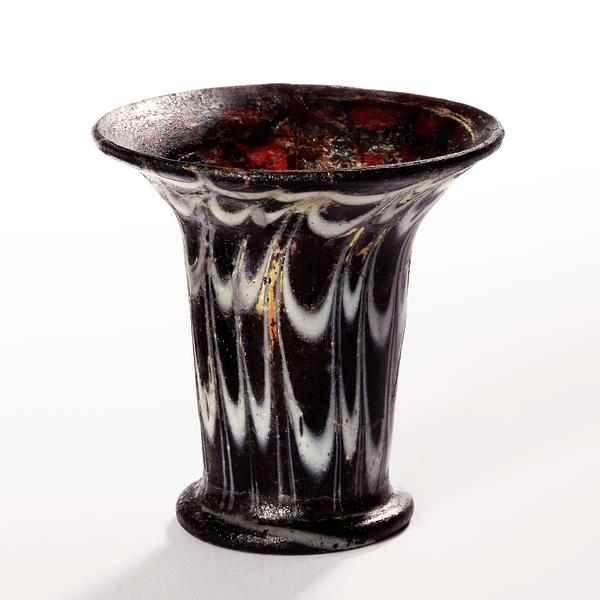Beaker, aubergine-colored glass, with marvered white thread decoration
Egypt or Syria; 13th-14th century
H: 6.5 cm
The shape of the beaker is characteristic of Ayyubid and Mamluk glass production and is also known from often more elongated beakers that were enameled and gilded. The glass’s decoration was created by marvering threads of white glass into the hot, dark basic mass and “combing” the glass to create a wavy pattern. Then the glass was blown and shaped until the desired result was achieved. This technique had its last Islamic renaissance under the Mamluks, but was successfully carried on in Europe by glassmakers in Venice.
Inv. no. 7/1989
Published in:
Sotheby’s, London, 12/4-1989, lot 22;
Kjeld von Folsach: Islamic art. The David Collection, Copenhagen 1990, cat.no. 244;
Kjeld von Folsach: Art from the World of Islam in The David Collection, Copenhagen 2001, cat.no. 343;
Alfried Wieczorek, Mamoun Fansa, Harald Meller (red.): Saladin und die Kreuzfahrer, Landesmuseum für Vorgeschichte, Halle, Mainz 2005, cat.no. B. 51;
